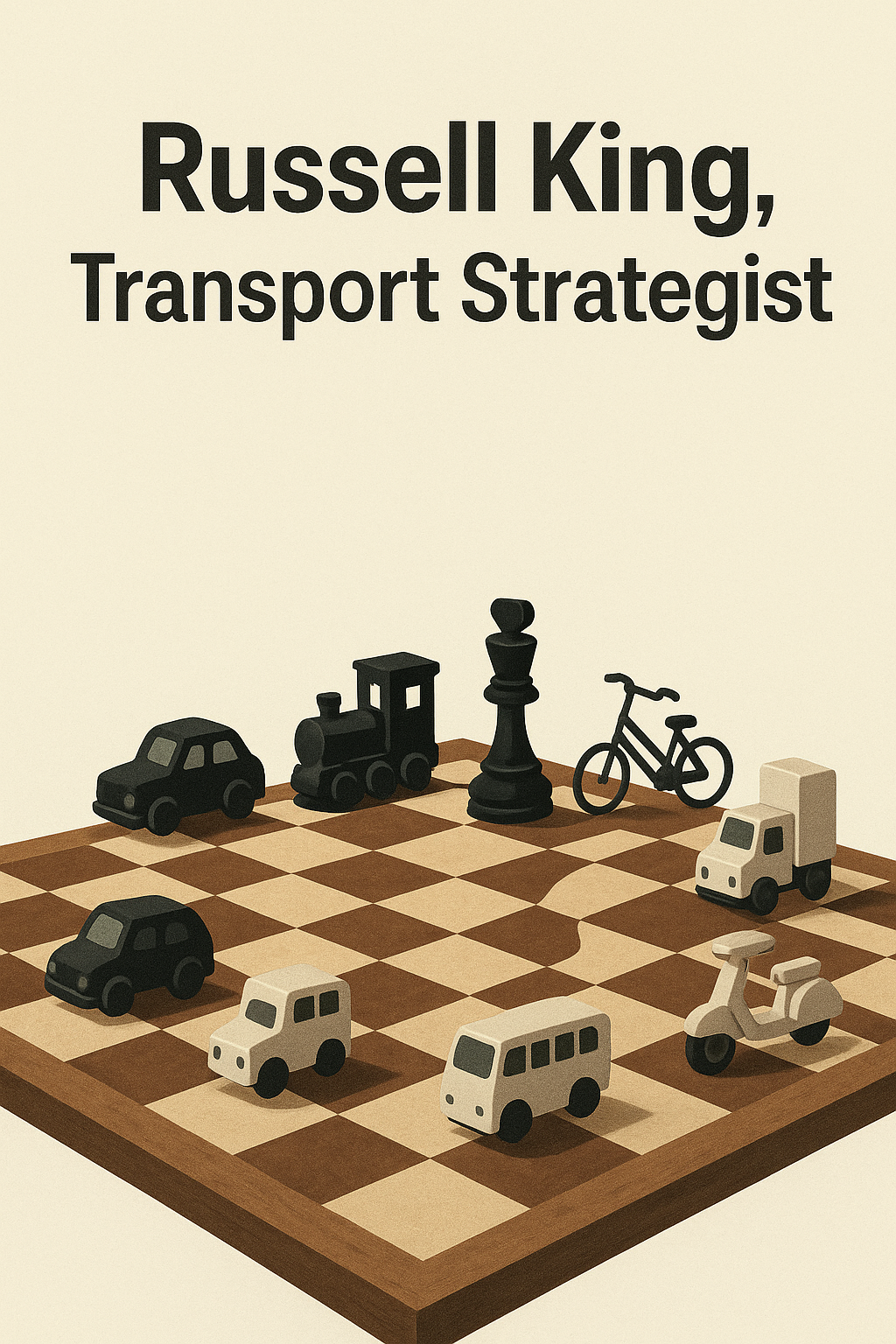S2E27 PnP Russell King on why Conservatives like active and public transport
Rethinking Transport: How Conservatives Can Embrace Active and Public Transport
In the latest Streets and People podcast episode, Wendy sits down with Russell King, a seasoned transport policy expert, to unpack a crucial yet often overlooked issue: why conservatives should be just as interested in active and public transport as progressives. This episode offers a fresh perspective on how transport systems can align with conservative values, and why the conversation around transport should be reframed to appeal to a wider political spectrum.
The Conservative Case for Active and Public Transport
At first glance, public and active transport might seem like a progressive agenda—a tool for reducing carbon footprints and promoting sustainability. But, as Russell King explains, there’s more to the story. For conservatives, these transport options offer practical solutions that resonate deeply with core values like individual freedom, economic efficiency, and reduced government expenditure.
1. Increasing Choice and Independence
For conservatives, one of the most compelling reasons to support active and public transport is that it increases choice. Public transport and active transport options like cycling or walking provide people with alternatives to driving, enabling greater freedom of movement. The idea that individuals can make their own decisions about how to get from point A to point B aligns directly with conservative principles of personal liberty and independence.
In the context of an increasingly car-dependent society, public transport allows people to choose a different mode of transport that doesn’t require ownership of a car—something that is especially empowering for those who cannot afford a car or don’t wish to drive. It also gives people the independence to get where they need to go without being tied to the fluctuating costs of petrol, car maintenance, or insurance.
2. Reducing Government Expenditure through Health Gains
Public and active transport not only reduces infrastructure costs but also has significant health benefits, which in turn help lower long-term government spending on healthcare. As Russell highlights, investing in walking, cycling, and public transport doesn’t just alleviate traffic congestion—it also promotes physical activity, which can have profound effects on public health.
Active transport, such as cycling or walking, significantly reduces the incidence of chronic health conditions like heart disease, diabetes, and obesity. By encouraging more people to walk or cycle as part of their daily routine, we can address some of the root causes of Australia’s rising healthcare costs. With fewer people relying on sedentary forms of transport (like driving), we reduce the burden of lifestyle diseases that often require expensive long-term medical care.
Studies consistently show that increasing physical activity is one of the most cost-effective ways to improve public health. When more people are walking or cycling, the demand for healthcare services related to preventable diseases drops. Over time, this leads to lower hospital admissions, fewer doctor visits, and reduced prescription medication use—resulting in substantial savings for the government.
For conservatives concerned with reducing government expenditure, the health benefits of active transport offer a persuasive argument. Less reliance on car travel not only reduces road maintenance costs but also lightens the load on our healthcare system. It’s a win-win: by investing in healthier transport options, we can achieve long-term savings in both public health and infrastructure spending.
3. Better Utilisation of Existing Resources
Conservatives often focus on making the most out of existing resources. The same principle applies to transport: enhancing public and active transport networks allows for the more efficient use of urban space and infrastructure. By reducing the number of cars on the road, we can free up lanes for essential services, reduce congestion, and decrease the wear-and-tear on roadways.
Rather than spending billions on expanding car-centric infrastructure, active and public transport solutions make better use of what is already in place. This resonates with conservative beliefs in maximising the utility of existing assets without the need for constant, costly upgrades.
Framing the Message to Politicians
When advocating for better transport systems, Russell stresses the importance of understanding where your local politicians stand and tailoring your message to align with their values and priorities. The key is to be clear about which side of politics they represent, and how your transport goals can fit into their broader policy agenda.
For conservative politicians, it’s important to frame the conversation around choice, cost-efficiency, and independence—values they hold dear. If you’re speaking to a local councillor or state minister with a conservative or libertarian background, focus on how better transport systems will reduce public spending, increase personal freedom, and make use of existing infrastructure in a smarter way.
As Russell explains, being specific about a politician’s portfolio is also crucial. If you’re reaching out to a politician responsible for infrastructure, highlight how public transport reduces the need for costly road expansions. If they oversee economic development, frame the conversation around how active and public transport can unlock economic benefits by improving access to jobs and services.
The Power of Policy Shifts
Ultimately, the conversation around transport isn’t about political affiliation—it’s about meeting the needs of the people and ensuring that our transport systems are efficient, equitable, and financially sustainable. By reframing the issue in terms of conservative values, we can shift the political narrative to one that promotes smarter, more sustainable transport systems that work for everyone.
Russell’s insights are a timely reminder that the benefits of better transport infrastructure are not restricted to any one political ideology. Whether you’re advocating for more buses, bike lanes, or better pedestrian facilities, it’s essential to present these ideas in a way that resonates with a broad spectrum of political beliefs. The goal should be to bring conservatives, progressives, and everyone in between into the conversation—because better transport systems benefit us all.
Sign up to Russell’s excellent newsletters and blogs here: transportlc.org/subscribe.


